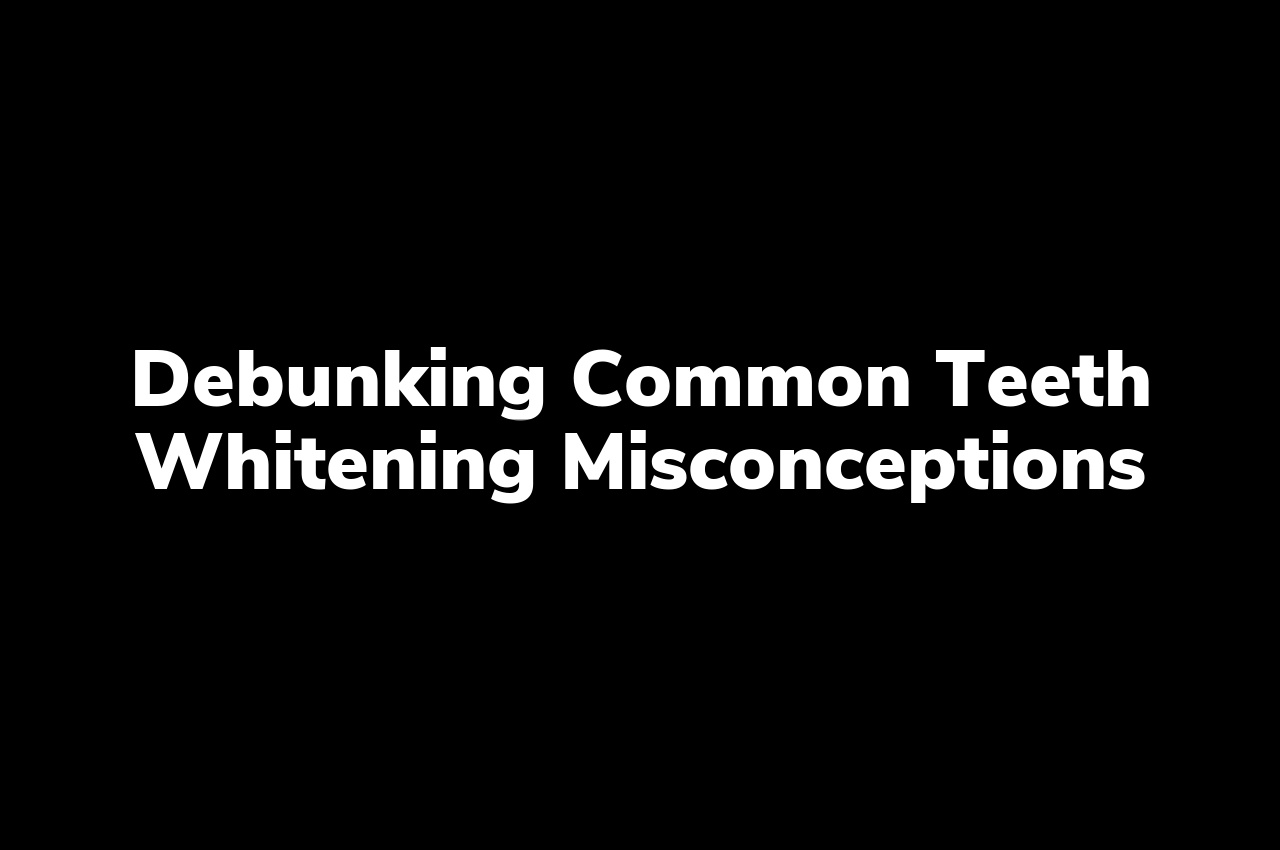Are you puzzled by the myriad of myths surrounding teeth whitening? This post aims to clear the air by debunking common misconceptions, providing you with a clearer understanding of what to expect from the process. Through examining facts, we’ll separate fiction from reality in the world of dental aesthetics.
Myths About Teeth Whitening Safety
In the realm of dental aesthetics, teeth whitening is often surrounded by misconceptions, particularly regarding its safety. One prevalent myth is that teeth whitening can severely damage tooth enamel, leading to increased sensitivity and other dental issues. However, when conducted under proper guidance, teeth whitening is a safe procedure. The narrative around its safety is frequently influenced by popular culture and media, with many looking up to public figures for beauty standards. This phenomenon is explored in depth in our article on Celebrities and Their Influence on Teeth Whitening, highlighting how celebrity endorsements can shape public perception, sometimes overshadowing the factual information provided by dental professionals.
Another common myth is that teeth whitening is suitable for everyone and can correct all types of discoloration. This misconception overlooks the fact that the effectiveness of teeth whitening varies depending on the cause of the tooth discoloration. For instance, discoloration due to medication or injury may not respond well to traditional whitening treatments. It’s crucial for individuals to consult with dental professionals to understand the most appropriate options for their specific situation, rather than relying solely on generalized information. Dispelling these myths is essential in ensuring that individuals have accurate expectations and make informed decisions regarding teeth whitening procedures.
Understanding Teeth Whitening Results Expectations
When it comes to teeth whitening, managing expectations is crucial. Many individuals embark on teeth whitening journeys with the hope of achieving a dazzling Hollywood smile overnight. However, it’s important to understand that results can vary widely based on several factors, including the natural color of your teeth, your dental health history, and the type of staining present. Teeth naturally come in a range of shades, and whitening treatments can only enhance your teeth’s natural color; they do not paint your teeth a new shade. Recognizing that teeth whitening is a process that may require patience and possibly multiple sessions can help set more realistic expectations and lead to greater satisfaction with the outcome.
Moreover, the longevity of teeth whitening results is another aspect where expectations need to be tempered. Factors such as diet, oral hygiene habits, and tobacco use can all influence how long the effects of a whitening treatment will last. It’s also worth noting that some internal stains, caused by medications or tooth trauma, may not respond to traditional whitening treatments at all. Understanding these nuances is key to setting realistic goals for your teeth whitening journey. For those looking to explore their options for a brighter smile in a professional setting, Achieve Your Brightest Smile in Somers might be a starting point to consider.
Debunking Teeth Sensitivity Post-Whitening Myths
Many people hesitate to pursue teeth whitening due to the widespread belief that it inevitably leads to increased teeth sensitivity. However, this concern, while understandable, is often based on misconceptions. It’s important to recognize that teeth sensitivity post-whitening is not a universal outcome. The experience varies from person to person, with many reporting no significant increase in sensitivity. Understanding the facts about teeth whitening and sensitivity can help dispel fears and clarify the reality of the process, emphasizing the importance of separating myths from facts in the realm of dental health.
Common Misconceptions on Whitening Frequency
Many people hold various misconceptions about how often teeth whitening should be done, believing either that it can be done as frequently as desired without any repercussions or, conversely, that it should be a once-in-a-lifetime procedure. The truth lies somewhere in between, and understanding the balance is crucial for maintaining both the health and aesthetics of one’s smile. It’s important to approach teeth whitening with accurate information and realistic expectations. For more details on maintaining your dental health, consider visiting Rosen Dental PC.
Natural Teeth Color vs. Whitening Misunderstandings
When it comes to achieving a brighter smile, many individuals harbor misconceptions about the natural color of teeth versus the results of whitening treatments. It’s essential to understand that the natural color of teeth varies from person to person, often influenced by genetics and lifestyle factors. The expectation that teeth whitening can lead to a universally stark white outcome is a common misunderstanding. Teeth have their own natural hue, which can range from light grey to yellowish tones, and whitening processes aim to lighten these natural colors rather than paint them a uniform shade of white. This distinction is crucial in setting realistic expectations and understanding the natural aesthetics of one’s smile.
Conclusion
Now that we’ve cleared up some common misconceptions, take the next step in your journey by calling us at 914-277-8400 or read our reviews on Google Maps.

